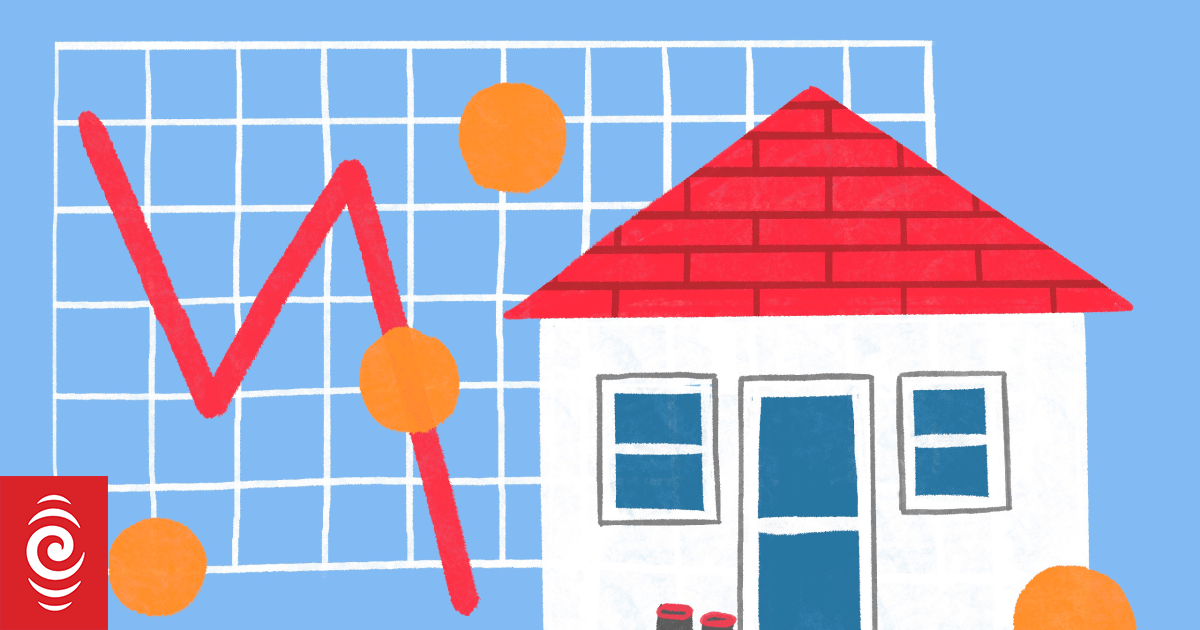Photo: RNZ
Stronger conditions for farmers may be helping regional property markets.
Stronger conditions for farmers may be helping regional property markets – and could pique property investors’ interest, Cotality, formerly Corelogic, says.
It has released its latest data, which shows, nationwide, values were down 0.2 percent in the month of July, 0.6 percent down in the quarter and 0.2 percent down year-on-year.
Auckland remains 21.7 percent below its peak, Wellington 24.7 percent and Christchurch 4.7 percent.
But there was a bit more resilience for values in provincial areas, which chief economist Kelvin Davidson said could reflect the two-speed nature of the New Zealand economy at present.
Primary industries are generally faring better than the rest of the country.
Gisborne experienced a drop in prices in July but Hastings, Whangarei and New Plymouth all rose by at least 0.5 percent.
“It’s early days and any perceived rural-urban divide in the property market at present should not be overplayed. After all, housing conditions are still fairly subdued almost everywhere. But a potential export-led recovery over the next year or two may well be a factor to watch in terms of boosting regional house prices relative to urban areas.”
Davidson said proportionally more of the regional markets had seen growth in values compared to the main centres.
“Nowhere is booming so it’s a relative story but if you look at the so-called regional markets, the provincial centres, there’s probably a slightly more common story around a bit more growth.”
He said the export-led recovery could mean “cash coming off farms” and going into service towns and cities.
“The longer the export-led recovery continues, the greater the chance you see outperformance in the regional markets.”
He said property investors might notice the trend and decide to look at areas such as Invercargill and New Plymouth.
“If there’s a bit more capital growth it might be a place to think about investing … I’m not making investment recommendations and keep in mind there’s always risk on the other side. If you’re looking at a high-level measure like gross rental yield or the possibility the markets deliver a bit more value growth, it doesn’t tell the full story. There are other costs associated and things to weigh up on both sides.”
Infometrics chief forecaster Gareth Kiernan said the South Island’s property market was generally stronger than the North Island’s.
“Parts of the South Island in particular seem to be performing better in terms of sales levels and stock numbers, it’s not quite as over-supplied but Auckland and Wellington are struggling.”
He said the country was facing an “old-fashioned” economic recovery, driven by the export sector rather than migration and housing radiating out of Auckland.
“I’m not sure whether the regional housing markets get dragged along with that agricultural upturn.”
He said some centres did not seem to have had the population growth to justify the number of houses built at the peak of the building boom.
That might put investors off.
“An oversupply issue in some regions persists … I’m positive about Christchurch and Queenstown and I guess some of those smaller regional centres have the benefit of being tied into the dairy sector, the rental yields are bit better than you get in Auckland.
“If there’s a better rental yield and potentially better expectation of capital gains that might be preferable [to main centres]. But it does depend on people’s expectation of what prices will do and there’s still a lot of uncertainty around it. Consenting numbers are still relatively high compared to population growth.”
Davidson said the second half of August was usually when there was an increase in the number of listings on the market.
“Sales volumes have been gradually growing to the point where the level of sales is back to about normal and we are starting to see hints that the total stock of listings is starting to come down, although it’s coming off a multi-year high … it will be interesting to see how it plays out in spring.”
Some properties were being removed from the market because owners had decided not to sell, he said.
Davidson said he was cautious about what might be ahead through the rest of the year.
“This is market that’s going sideways. Sales are rising but it’s not flowing through to prices. There are restraining forces on the other side – abundant listings, a weak economy and labour market.
“Both buyers and sellers seemingly remain in a measured mood. First home buyers and ‘Mum and Dad’ investors are active groups on the purchaser side of the equation at present, but it’s also worth noting that many vendors aren’t rushed at present either – those who are confident about their employment security may well be happy to wait for the price they want.”
He said while it had previously been expected that house prices might lift 5 percent this year, it now seemed the lift would be smaller than that.
“In fact, on recent form, the market may struggle to generate much more than a 1 percent or 2 percent rise in 2025.”
Sign up for Ngā Pitopito Kōrero, a daily newsletter curated by our editors and delivered straight to your inbox every weekday.

